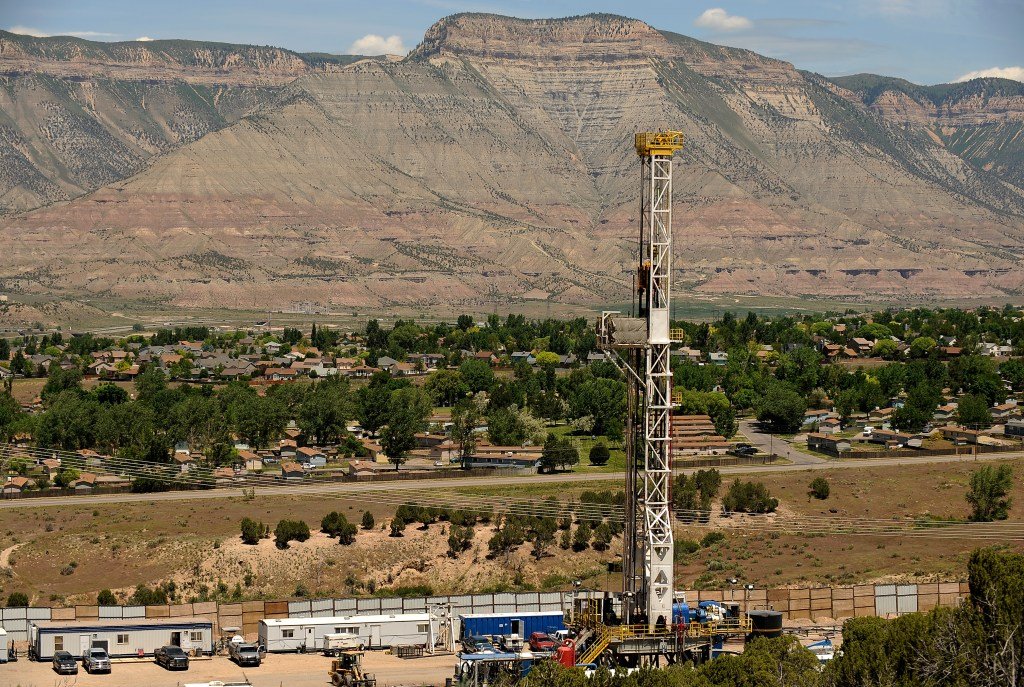The mantra of “drill, baby, drill” could become reality if President Donald Trump’s executive orders succeed in ramping up oil and gas production in Colorado and nationwide, a goal of industry supporters and a fear for advocates of public lands and renewable energy.
Trump declared an energy emergency he said the previous administration created by pursuing “a precariously inadequate and intermittent energy supply,” a broadside at the increasing deployment of renewable energy.
But it’s unclear if the U.S., the world’s leading producer of oil and natural gas, will see stepped-up drilling even with Trump’s push for more. Analysts note the industry has been more focused in recent years on cash flow rather than more flows from wells.
And environmental organizations said Coloradans and other Westerners have consistently supported conservation of public lands and protections for air, water and wildlife in the face of increased development.
For their part, national and state industry representatives praised the executive order issued on Trump’s first day in office that calls for unleashing “America’s affordable and reliable energy,” specifically oil and gas. Other sources being promoted are coal, hydropower, biofuels, critical minerals and nuclear power.
The order directs federal agencies to expedite the issuing of permits on federal lands, saying burdensome regulations have impeded the development of the nation’s energy resources in recent years.
“We’re very happy that the regulatory thicket is going to be cleared out by the Trump administration and we will work with them closely to do so,” said Kathleen Sgamma, president of the Western Energy Alliance, which represents independent oil and gas companies.
The volume of leases issued on federal lands under the Biden administration was “ridiculously low,” Sgamma said. She criticized what she called overly burdensome regulations, including a new rule on decreasing methane emissions from wells, and a lack of regular lease sales.
“The vast majority of our industry looks at methane regulations and says, ‘Yeah, we’re happy to comply with methane regulations,’ but when it’s meant to be punitive and to tie up industry and reduce development and production, that’s when we’re going to complain,” Sgamma said.
Despite roadblocks under the Biden administration, producers carried on, Sgamma said. However, she said companies have been drilling with permits approved by the first Trump administration. “The full effects of Biden’s policies have not come to fruition yet.”
Early on, the Biden administration suspended new oil and gas leasing and drilling permits on public lands and waters to review programs at the Department of Interior as part of addressing climate change. The sales were resumed, but far fewer leases were offered, according to the industry.
“I think the more important overall point is to look at how many leases the industry has that they’re sitting on, leases they’re holding but not producing. In many of the lease sales that were held, industry often didn’t show a whole lot of interest,” said Rachael Hamby, policy director at Western Priorities, a Colorado-based conservation group.
A report by Western Priorities using government data said as of fiscal 2023, companies held leases covering more than 10 million acres, or 46% of the total federal lands under lease, that were sitting idle. Approximately 6,900 permits issued hadn’t been used, according to the analysis.
Amanda Eversole, executive vice president and chief advocacy officer of the American Petroleum Association, said it’s vital for the industry to have an adequate inventory of leases because developing new sites takes a long time. She said there was a lot of concern in 2024 when there were no off-shore lease sales scheduled for the first time since 1966.
Leases on federal lands and waters represent about 25% of the industry’s overall acreage, Eversole said. “That’s a very significant part of how we do our business.”
Energy demand is increasing and the industry needs to find supply across the board to meet the demand, Eversole added.
Sgamma worries about the rising demands on the electric grid with the growth of data centers, which use a lot of electricity, and efforts to electrify transportation and buildings. She said there have been many closures of plants that provide baseload power, such as natural gas, which can be turned off and on.
Will the industry drill, baby, drill?
But the hitch in the effort to boost domestic oil and gas production might be the industry itself.
“You can have an administration that might clear up some red tape, but at the same time you also need to change the mindset of these public companies that have been listening to investors saying, ‘Hey, look, we want to focus on returns. We don’t want to take all that cash flow and put it right to the drill bit,’” said Ryan Hill, principal analyst at Enverus Intelligence Research.
The energy analytics firm sees most of the growth in domestic oil production happening in the Permian Basin of West Texas and southeastern New Mexico. The economics are more favorable there because of the lower break-even point of drilling costs.
“When you think about what turns on activity, what turns on extra growth, you need higher oil prices,” Hill said. “If the administration is focused on making sure energy is affordable, having high oil prices and affordable energy are at odds with each other.”
Oil prices are around $74 per barrel, down considerably from more than $90 in 2022. The U.S. Energy Information Administration expects oil to average $74 per barrel this year, 8% less than 2024, and fall to $66 per barrel in 2026.
In addition, Hill said, many of the country’s major oil plays “are getting tapped out or nearly tapped out.”
“When it comes to quality oil-laden inventory in the lower 48, it’s scarce,” Hill said.
Colorado is a major oil and gas producer and the Denver-Julesburg Basin in the northeastern part of the state is the epicenter. Hill said the basin is one of the most economical areas to drill, but is nearing the end of its life. There are fewer than five years of high-quality, economical inventory left, he said.
A 2019 law that tightened many state oil and gas rules has created some headwinds for the industry in Colorado, Hill said. But he added that companies have responded with “some of the most creative drilling” to operate within the framework meant to reduce the impacts on communities and the environment.
Trump’s executive order on boosting oil and gas production applies to federal, or publicly owned lands and waters. Public lands include those overseen by the Bureau of Land Management and the U.S. Forest Service. The bulk of public lands are in the West.
Companies can lease public land to drill. They pay royalties on the publicly owned minerals.
The U.S. Energy and Information Agency said the country has been the world’s top oil producer since 2018. The agency reported the U.S. generated an average of 13.4 million barrels per day in August 2024, a record.
Eversole and Kait Schwartz, director of API Colorado, said while the executive orders could increase oil and gas production on federal lands, they won’t affect production in Colorado.
“We’re looking forward to increasing lease sales and hopefully unleashing (liquified natural gas), but that doesn’t change the regulatory framework we have here in Colorado,” Schwartz said. “We’ll still have to operate under some of the strictest rules in the world.”
Eversole said the industry is dedicated to not only serving the needs of customers “but doing it in a way that is respectful of the community” and not taking shortcuts.
As the oil and gas industry cheers the opportunity to streamline the permitting process on federal lands and get rid of what they see as heavy-handed mandates, Michael Freeman, an attorney with Earthjustice, said Trump’s executive order isn’t about lowering energy prices for consumers.
“It’s about padding the profits for Trump’s donors in the oil and gas industry,” Freeman said. “What they’re going to be doing is stockpiling federal oil and gas leases and getting Trump to do things that are going to increase demand for their product.”
Hamby of Western Priorities said the executive order pointedly focuses on fossil fuels. “I think that developing renewable energy is one of the paths that a country could take to actual energy dominance for the future, for the clean energy economy that the rest of the world is transitioning to.”
The president’s order includes a move to eliminate goals to increase the number of electric vehicles on the roads. The fate of federal tax credits for renewable energy is also uncertain.
But Freeman believes the public supports conserving public lands and wildlife and protecting the environment. He said results of the annual Colorado College State of the West poll have consistently shown strong, widespread support among Western voters for conservation.
“Voters by and large do not want to see our public lands turned over to oil and gas companies, nor are they in favor of gutting environmental protections that ensure access to clean air and clean drinking water,” Freeman said.
Get more Colorado news by signing up for our daily Your Morning Dozen email newsletter.













Leave a Reply